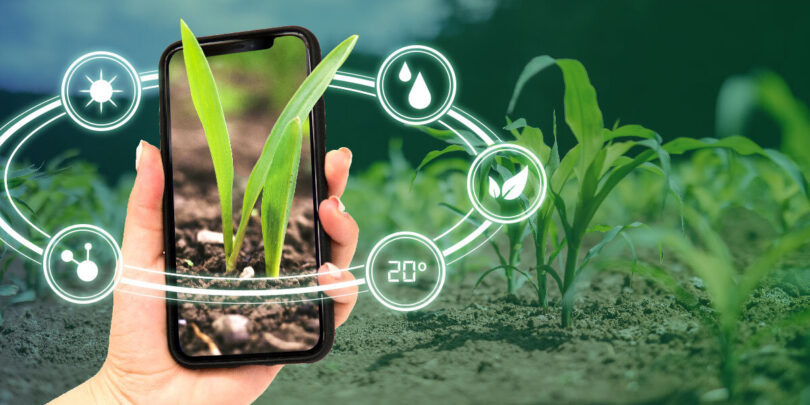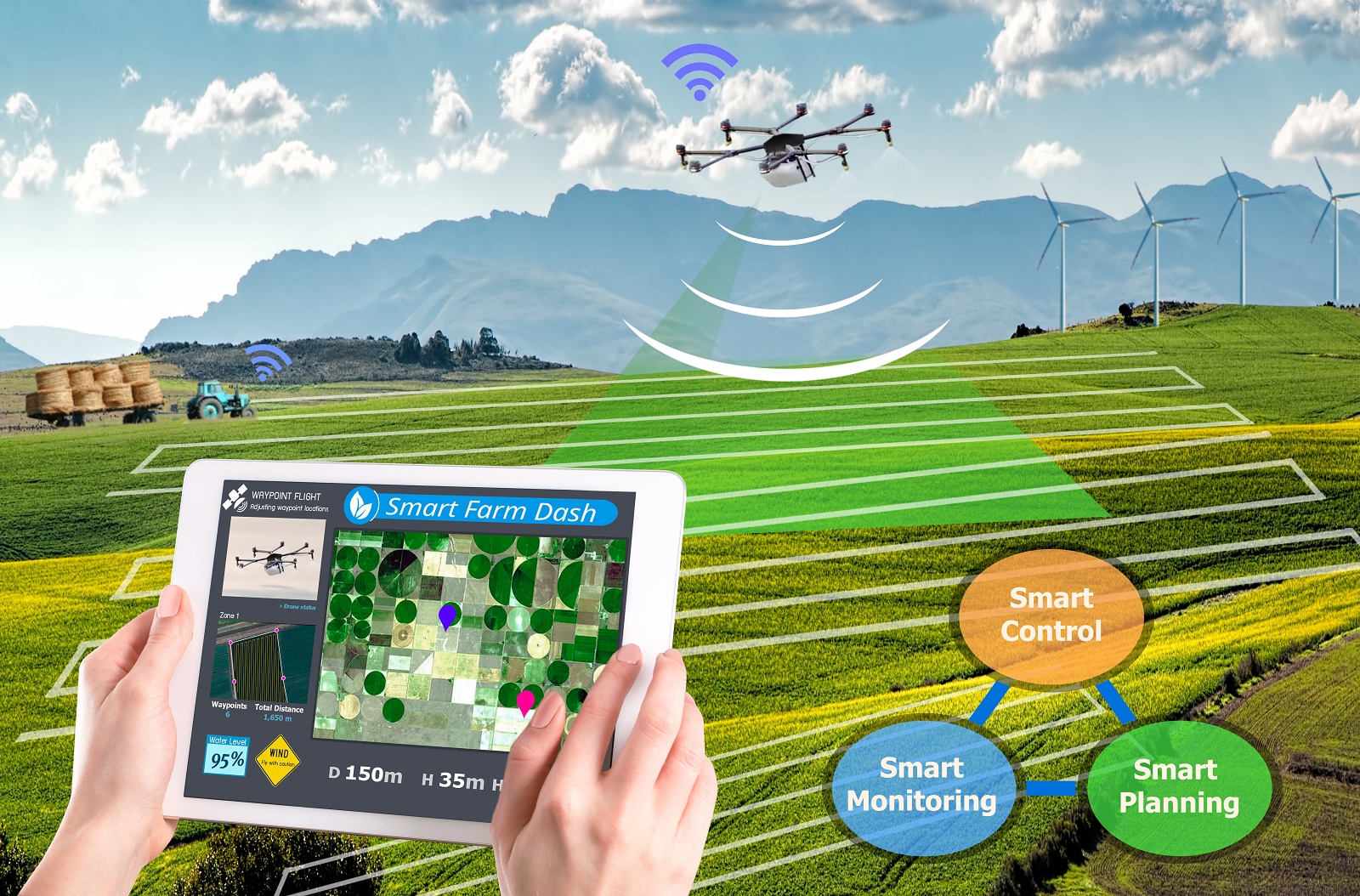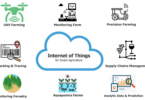Technology plays a crucial role in modern agriculture, helping farmers enhance profitability while also benefiting the environment. Here are some key ways technology supports these goals:
Precision Agriculture
Precision agriculture involves using technology to monitor and manage field variability in crops. It includes:
- GPS and GIS: These systems help in accurate mapping and field analysis, allowing for precise planting, fertilization, and harvesting.
- Remote Sensing: Drones and satellites provide real-time imagery and data about crop health, soil conditions, and pest infestations.
- Variable Rate Technology (VRT): VRT allows for the precise application of inputs (e.g., seeds, fertilizers, pesticides) based on the specific needs of different areas within a field. This reduces input costs and minimizes environmental impact.
Automation and Robotics
Video Credit – https://www.istockphoto.com/
Automation reduces labor costs and increases efficiency:
- Autonomous Tractors and Machinery: These can operate without human intervention, performing tasks such as plowing, planting, and harvesting with high precision.
- Robotic Milking Machines: Automate the milking process, improving productivity and animal health.
- Harvesting Robots: Designed to pick fruits and vegetables, these robots reduce the reliance on seasonal labor and ensure timely harvesting, which is crucial for crop quality.
Data Analytics and IoT
The Internet of Things (IoT) and data analytics help in making informed decisions:
- Smart Sensors: Placed in fields to monitor soil moisture, temperature, and nutrient levels, allowing for precise irrigation and fertilization.
- Big Data Analytics: Analyzes vast amounts of data to provide insights on crop performance, weather patterns, and market trends.
- Farm Management Software: These platforms integrate data from various sources, providing farmers with a comprehensive overview of their operations. They help in planning, monitoring, and managing farm activities more effectively.
Biotechnology
Biotechnology innovations contribute to sustainable farming:
- Genetically Modified Organisms (GMOs): Crops engineered for traits such as higher yields, pest resistance, and drought tolerance. GMOs can reduce the need for chemical inputs and increase food production in challenging environments.
- Biofertilizers and Biopesticides: These are environmentally friendly alternatives to synthetic fertilizers and pesticides. Biofertilizers enhance soil fertility by fixing nitrogen and decomposing organic matter, while biopesticides control pests using natural predators or substances.
Sustainable Farming Practices
Technology supports sustainable agriculture practices:
- Conservation Tillage: Reduced or no-till farming preserves soil structure, reduces erosion, and improves water retention. This practice also enhances soil organic matter and reduces fuel consumption.
- Integrated Pest Management (IPM): Combines biological, cultural, mechanical, and chemical methods to control pests. IPM minimizes the use of chemical pesticides, reducing environmental impact and promoting biodiversity.
- Cover Cropping: Planting cover crops helps prevent soil erosion, improve soil health, and manage weeds and pests. Cover crops also enhance water infiltration and reduce the need for chemical inputs.
Water Management
Video Credit – https://www.istockphoto.com/
Efficient water use is crucial in agriculture:
- Drip Irrigation Systems: Deliver water directly to plant roots, minimizing evaporation and runoff. Drip irrigation systems can be automated and controlled remotely, ensuring optimal water use.
- Soil Moisture Sensors: Monitor soil moisture levels in real-time, helping farmers schedule irrigation more effectively. This prevents overwatering and water wastage, leading to better crop yields and reduced water use.
- Weather Forecasting Tools: Provide accurate and timely weather information, helping farmers plan irrigation schedules and other farm activities. This reduces water stress on crops and optimizes resource use.
Renewable Energy
Farmers are adopting renewable energy sources to reduce their carbon footprint and improve sustainability:
- Solar and Wind Power: Renewable energy sources provide clean energy for farm operations, reducing reliance on fossil fuels. Solar panels can power irrigation systems, electric fences, and other farm equipment.
- Bioenergy: Agricultural waste, such as crop residues and animal manure, can be converted into bioenergy. This not only reduces waste but also provides an additional source of income for farmers.
Market Access and Financial Management
Technology improves market access and financial stability for farmers:
- E-commerce Platforms: Allow farmers to sell their products directly to consumers, bypassing intermediaries. This increases profitability and provides consumers with fresh, locally grown produce.
- Mobile Banking and Insurance: Provide financial services and risk management tools to farmers, especially in remote areas. Mobile banking enables easy access to credit and savings, while agricultural insurance protects against crop failures and other risks.
Case Studies and Success Stories
- Case Study: John Deere Precision Agriculture John Deere’s precision agriculture technologies include GPS-guided equipment and data analytics platforms. These technologies have helped farmers reduce input costs and increase yields by optimizing planting and harvesting processes.
- Case Study: Drip Irrigation in India The adoption of drip irrigation systems in India has led to significant water savings and increased crop yields. This technology has been particularly beneficial in regions with water scarcity, demonstrating a positive environmental impact.
- Case Study: Biopesticides in Kenya Farmers in Kenya have started using biopesticides to manage pest problems. This shift from chemical pesticides has improved crop health and reduced environmental pollution, showing how biotechnology can benefit both farmers and the environment.
Conclusion
Technology in agriculture not only boosts profitability by increasing efficiency and reducing costs but also promotes environmentally sustainable practices. By integrating advanced tools and techniques, farmers can achieve higher yields and better resource management while minimizing their ecological footprint. The ongoing development and adoption of agricultural technologies promise a more resilient, productive, and sustainable future for farming.









Leave a Comment